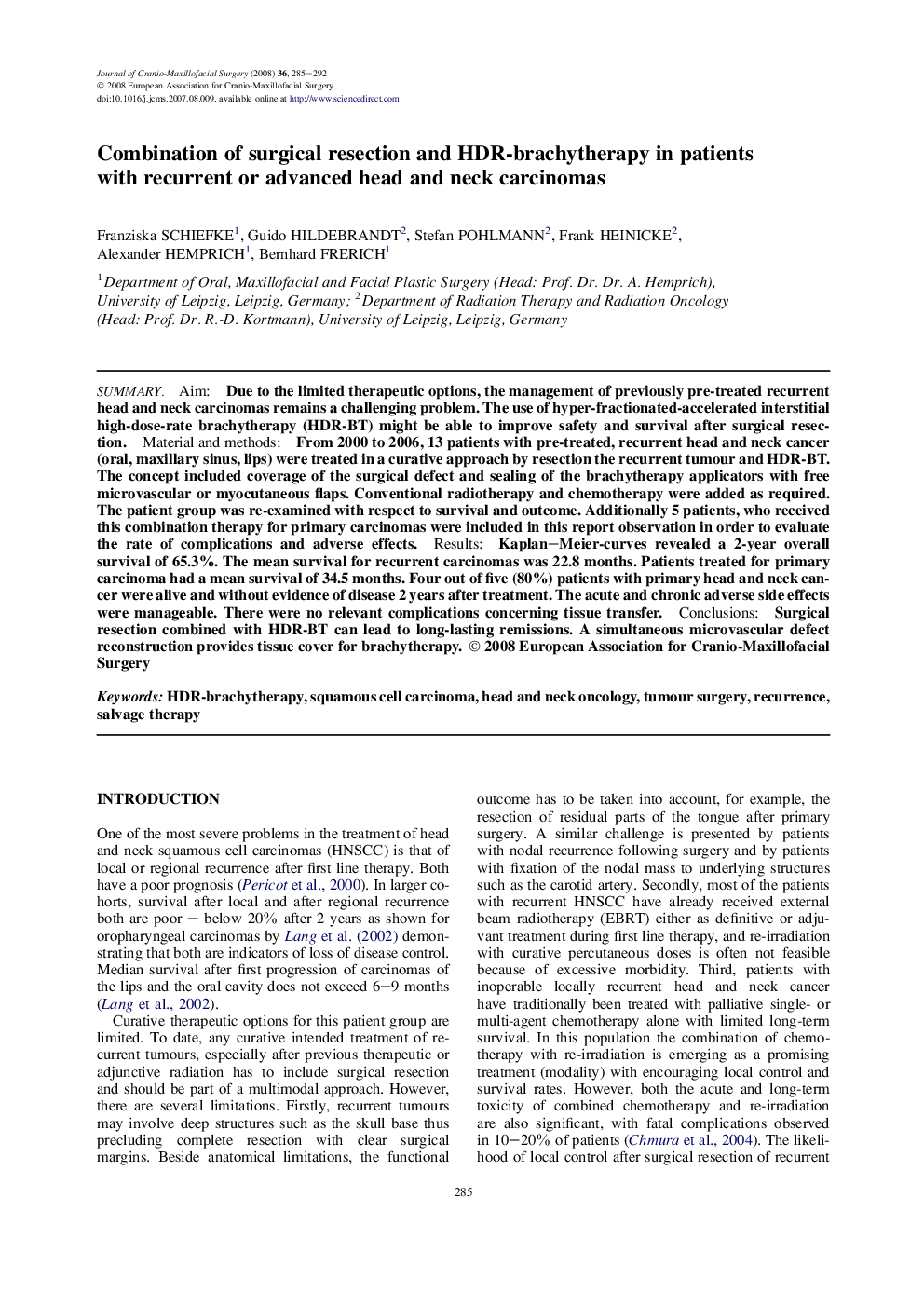| Article ID | Journal | Published Year | Pages | File Type |
|---|---|---|---|---|
| 3143609 | Journal of Cranio-Maxillofacial Surgery | 2008 | 8 Pages |
SummaryAimDue to the limited therapeutic options, the management of previously pre-treated recurrent head and neck carcinomas remains a challenging problem. The use of hyper-fractionated-accelerated interstitial high-dose-rate brachytherapy (HDR-BT) might be able to improve safety and survival after surgical resection.Material and methodsFrom 2000 to 2006, 13 patients with pre-treated, recurrent head and neck cancer (oral, maxillary sinus, lips) were treated in a curative approach by resection the recurrent tumour and HDR-BT. The concept included coverage of the surgical defect and sealing of the brachytherapy applicators with free microvascular or myocutaneous flaps. Conventional radiotherapy and chemotherapy were added as required. The patient group was re-examined with respect to survival and outcome. Additionally 5 patients, who received this combination therapy for primary carcinomas were included in this report observation in order to evaluate the rate of complications and adverse effects.ResultsKaplan–Meier-curves revealed a 2-year overall survival of 65.3%. The mean survival for recurrent carcinomas was 22.8 months. Patients treated for primary carcinoma had a mean survival of 34.5 months. Four out of five (80%) patients with primary head and neck cancer were alive and without evidence of disease 2 years after treatment. The acute and chronic adverse side effects were manageable. There were no relevant complications concerning tissue transfer.ConclusionsSurgical resection combined with HDR-BT can lead to long-lasting remissions. A simultaneous microvascular defect reconstruction provides tissue cover for brachytherapy.
